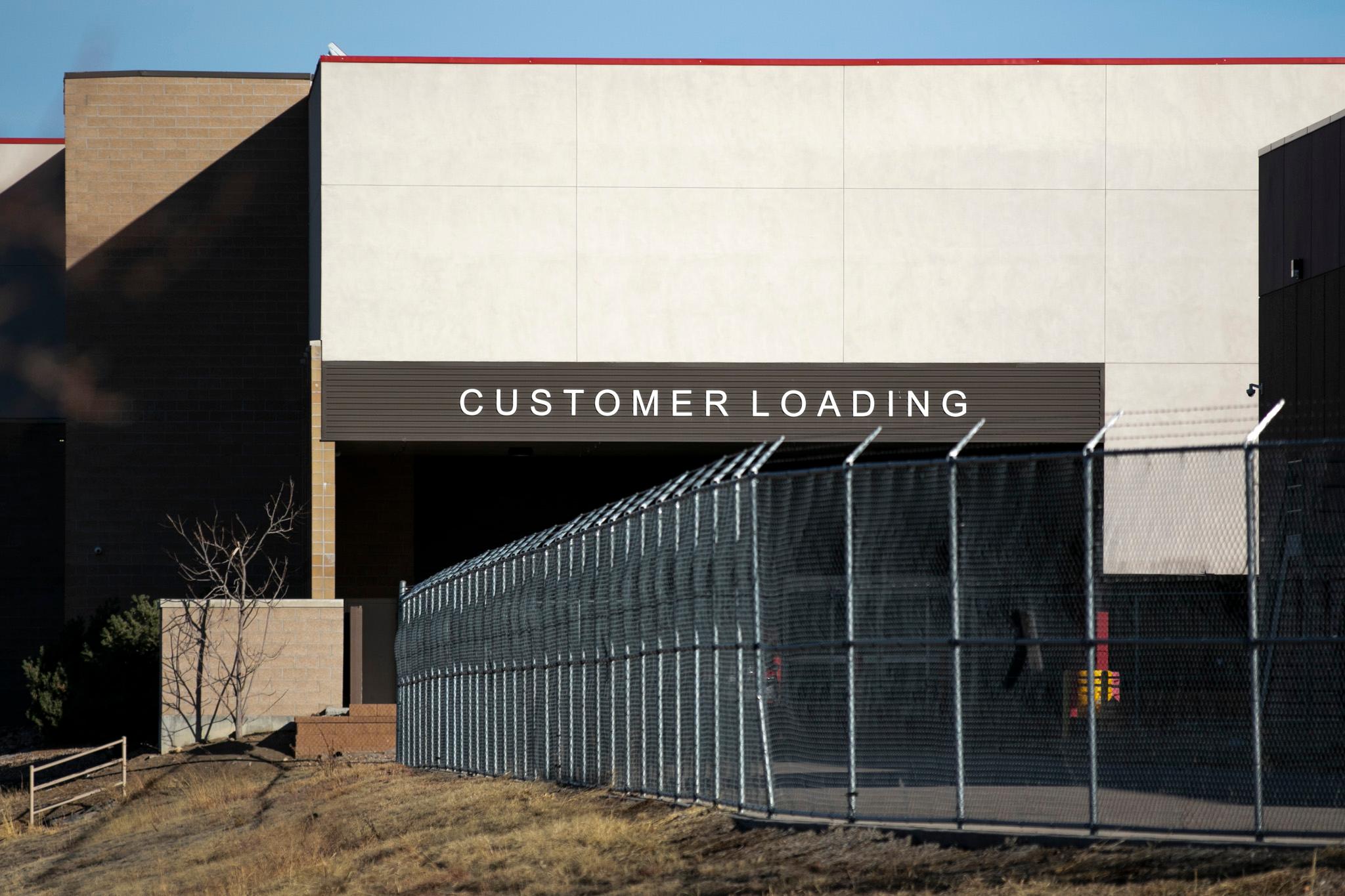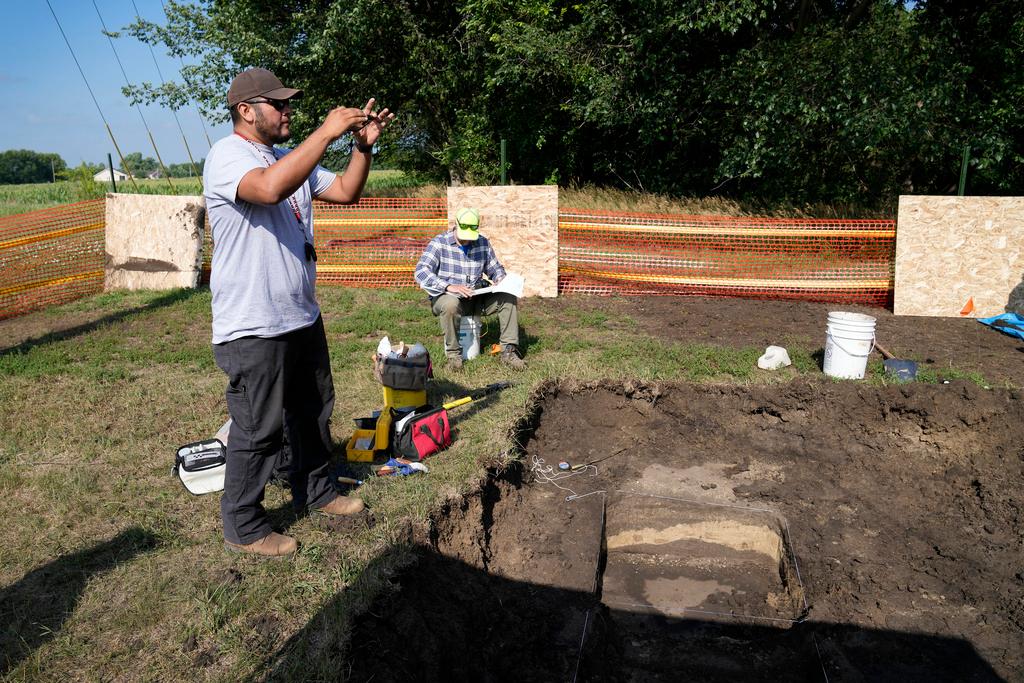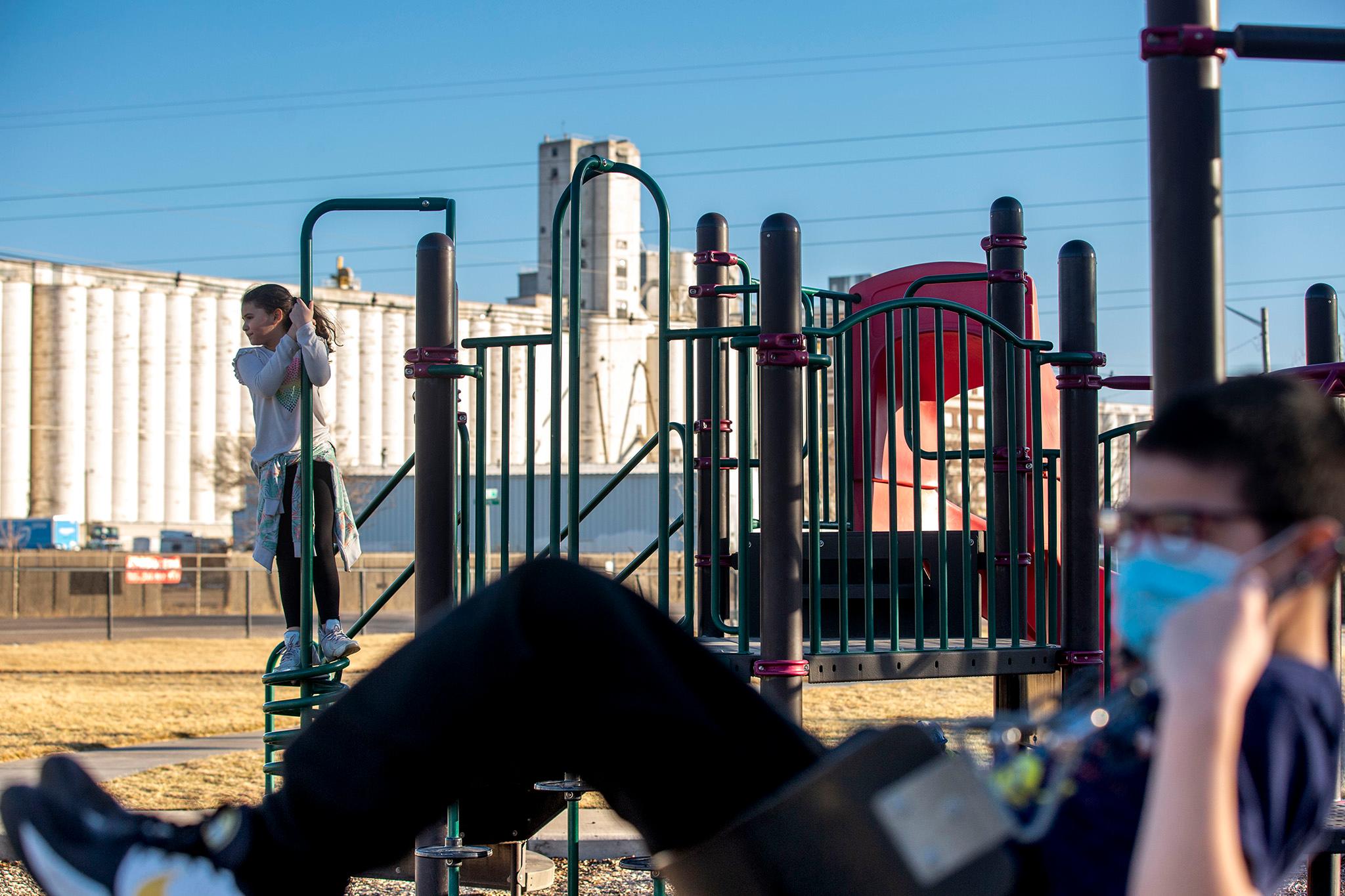
New results from an independent air monitoring project released this week suggest Commerce City and north Denver residents breathe far more pollution than people in other Front Range communities.
For the predominantly Latino organizers behind the effort, those findings confirm long-held suspicions of dangerous pollution in the area and raise new questions about lax air quality enforcement at nearby industrial facilities. That includes the massive oil refinery operated by Suncor Energy, which usually supplies a large portion of the gasoline and diesel fuel sold in Colorado.
Cultivando, a nonprofit based in Commerce City, led the air monitoring project. At a packed press conference Wednesday at the University of Denver, director Olga Gonzalez said the results are clear proof of environmental racism in a community that’s long sought an explanation for higher rates of asthma and heart disease.
“Why should our community be sacrificed for the sake of cheaper gasoline? Why do our children need to pay this price?” Gonzalez asked. “It’s not okay to tell us that this is just in our head.”
How Cultivando came to conduct the study and how the group measured air quality
The effort is part of a nationwide trend to put professional-level air monitors into the hands of neighborhood groups and environmental activists.
Those projects attempt to fill gaps left by state environmental agencies, which tend to use monitors to track pollution at specific industrial sites or track ambient air quality for a narrow set of pollutants regulated under the U.S. Clean Air Act.
The Cultivando project, by contrast, watches for dozens of toxic chemicals and posts the real-time results online. It came together after Colorado air regulators announced a $9 million settlement with Suncor in 2020 due to a litany of pollution violations. The state set aside part of the penalty to fund local community projects.
After winning the largest share of the grant funding, Cultivando hired Boulder A.I.R., a local air quality contractor owned by atmospheric scientist Detlev Helmig. His company operates similar community air monitoring projects for Boulder, Broomfield and other communities along the Front Range.
“On the whole, this is one of the most comprehensive air monitoring programs in the state,” Helmig said.
For Cultivando, he set up one fixed air monitor about a quarter mile north of the Suncor refinery. Another mobile monitor on a trailer took measurements at various locations around Denver and Commerce City.
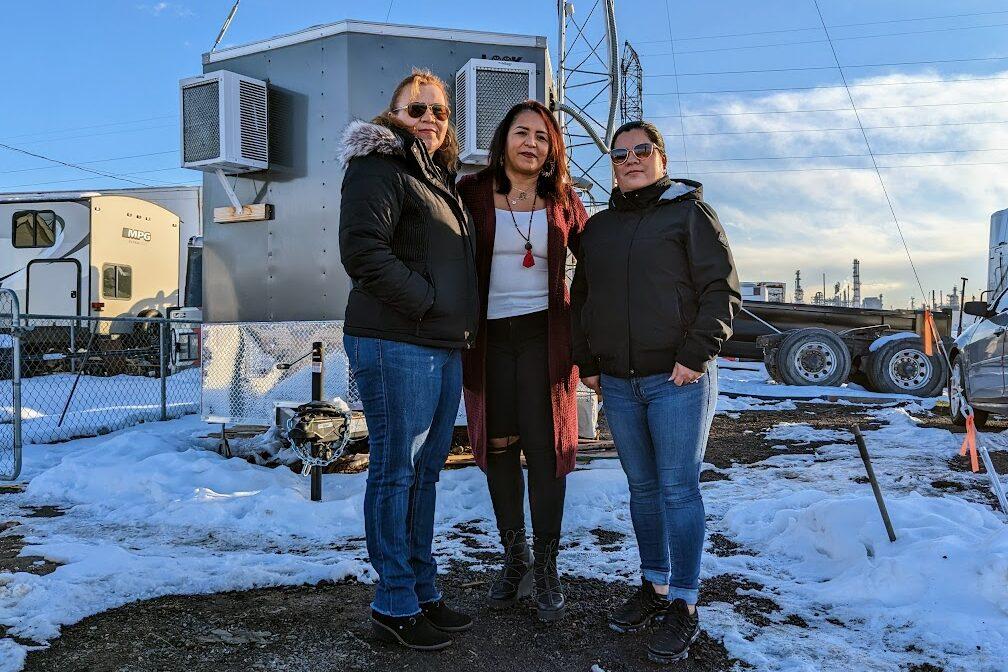
Toxic gases and dangerous particulates in Commerce City and north Denver
At the press conference, Helmig presented more than a year of results showing elevated levels of toxic gases and dangerous particulate matter in north Denver and Commerce City. To assess the severity of the problem, Boulder A.I.R. compared levels measured at the Cultivando monitors to readings at other monitors operated by the company.
One example of the disparity is the readings of PM2.5, the technical name for particles at least 20 times smaller than the width of a human hair. Multiple studies have shown breathing those particles exacerbate heart and lung conditions, leading to higher rates of hospitalization and emergency room visits. Long-term exposure is associated with lower birth rates and asthma development in children.
The U.S. Environmental Protection Agency sets legal standards for ambient concentrations of PM2.5. Averaged over a 24-hour period, concentrations should not exceed levels of 35 micrograms per cubic meter but air monitors often record brief spikes above that threshold.
Helmig used the standard as a way to compare the spikes at different monitors operated by his company. At the Cultivando monitor, PM2.5 levels rose above the 35 ug/m3 threshold about 12,300 times between March 2022 and March 2023. A similar monitor in Broomfield noted 380 spikes over the threshold.
Helmig noted a similar comparison for airborne benzene. The Cultivando air monitors measured the biggest spikes over the last fall and winter, seasons when the carcinogenic compound is more likely to build up in the atmosphere due to more stagnant weather conditions. The Broomfield monitor logged far lower benzene measurements over the same time period.
Michael D'Agostino, a community and partnership program manager for the Colorado Air Pollution Control Division, said air regulators have reviewed those findings. In an emailed statement, he said state and federal air standards are in place to assess any public health risk for air pollution. While spikes are important to monitor and consider, he said they’re only “snapshots” of the larger picture.
“To assess potential health impacts from any substance, we consider how much, how long, and how often people are exposed. When evaluating risk, federal guidelines are based on exposure over certain time periods, and you cannot reliably compare a snapshot to the established health-based standards,” D’Agostino said.
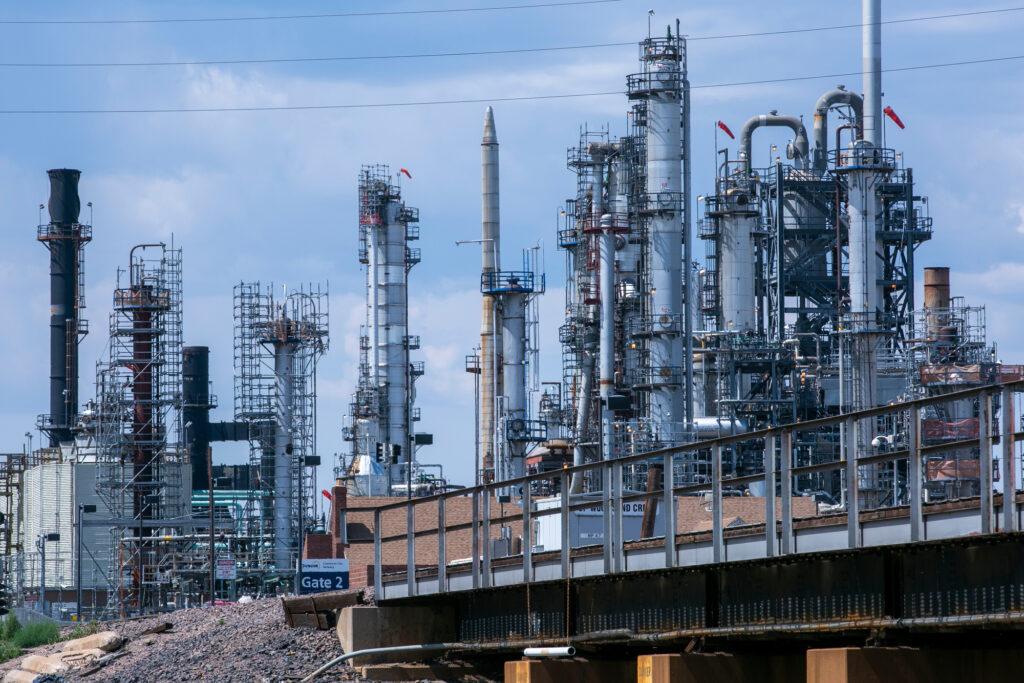
Radioactive particles are also elevated
Another part of the assessment considered airborne radioactive particles. The topic has become a new concern following new research linking radioactivity with oil and gas operations.
In 2020, a Harvard study used measurements from Cold War-era radiation monitoring stations to measure radioactive particles downwind of hydraulic fracturing sites. It found levels were significantly higher than background radiation levels. The researchers said that could be because the fracking process blasts apart rocks containing uranium and other radioactive elements.
Helmig said equipment measured higher radioactivity levels when the wind carried air from the direction of the Suncor refinery. While he said it’s unclear if the facility is emitting radioactive particles, the measurements show it is a potential source.
Suncor launched its own community air monitoring program in August 2021. Loa Esquilin Garcia, a spokesperson for the company, said the compounds it measured in north Denver and Commerce City have remained below standards used by state and federal public health agencies.
"We plan to continue listening to community and sharing information about community air quality," Garcia said. "We are committed to doing this work in a data-driven and collaborative way."
This story was updated March 17 with comment from Suncor.



